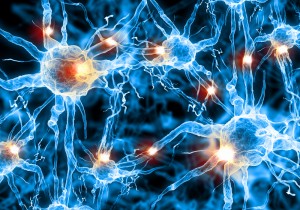Nerve Stimulation Could Protect Against Migraine Headaches

Repeat migraine sufferers may find unprecedented relief from their headaches with a nerve stimulator that is placed on the forehead. Even more importantly, this new device has proven to be quite safe while being tested in this new migraine headache clinical trial.
The research team working on this project has reported that the participants who used the nerve stimulation device for a short period each day over the course of three months had fewer migraine headaches. This group of participants was compared to another group who used a “sham” device.
(However, the lead investigator for this clinical trial has stated that the difference between the groups was not very significant.)
More Treatment Options for Migraine Headaches
Currently, there is not universally effective therapy available for people who suffer repeat migraine headaches. For that reason, there has been a push for more treatment options, and these results do suggest that they could have something of value with this nerve stimulation device.
The headband-like device was developed by STX-Med, and they were donated to the research team for this clinical study. The migraine clinical trial was conducted in Belgium where the devices will cost around 300 Euros (slightly more than $400) according to the lead investigator Dr. Jean Schoenen, from Liege University.
A representative of the company has stated that the device, which is called Cefaly, has been submitted for approval to the U.S. Food and Drug Administration, but as of yet it has not received approval.
Testing this New Electrical Nerve Stimulator
This research team enrolled 67 people who suffered repeat migraines for this clinical trial. Some of the participants were treated with this electrical nerve stimulator, and some of them were treated with a sham stimulator that looks identical. Each participant would wear the device for 20 minutes each day for three months.
Over the course of this treatment period, the average number of migraines that these participants experienced fell from seven to five among those that had been treated with the stimulation device. The average level of migraines remained pretty steady (between six and seven) for the participants that were treated with the sham device. A full analysis has shown that thirty-eight percent of the participants in the nerve stimulation group experienced about half the number of migraines after treatment, compared to only twelve percent of the control group.
What Do the Results Say…
 There has been some discussion concerning these results, as they are fairly modest in comparison. In fact, other migraine treatments like topiramate (marketed as Topamax) have produced better results in clinical tests, but they also can produce a number of adverse side effects. On the other hand, this nerve stimulation device has not been associated with any serious side effects in its clinical trial.
There has been some discussion concerning these results, as they are fairly modest in comparison. In fact, other migraine treatments like topiramate (marketed as Topamax) have produced better results in clinical tests, but they also can produce a number of adverse side effects. On the other hand, this nerve stimulation device has not been associated with any serious side effects in its clinical trial.
This device has been used by some of the lead investigators in their own practices. The device works by transmitting these electrical signals through the electrodes that are attached to the patient’s forehead, above their eyes. The electrical signals will stimulate a major facial nerve known as the trigeminal.
The participants in this trial were classified as the average migraine patient who tends to experience one to two migraine headaches a week. The results have shown that there are a certain number of patients who can benefit from this stimulation treatment. At the same time, there are patients who experience the same type of headache but do not respond to this form of treatment.
20 Min a Day to Treat Migraines
This stimulation device can be used in the comfort of the patient’s own home which could make it very popular. You may be reading, doing some housework, or just watching television while using the device. It only needs to be applied for 20 minutes each day, and that can make things a bit simpler for migraine headache sufferers.
At this time, there is still more research that needs to be conducted on this device and its full range of capabilities. So, if you are interested in trying this nerve stimulation device, you might be better off renting one for a couple of months before you decide to purchase one.